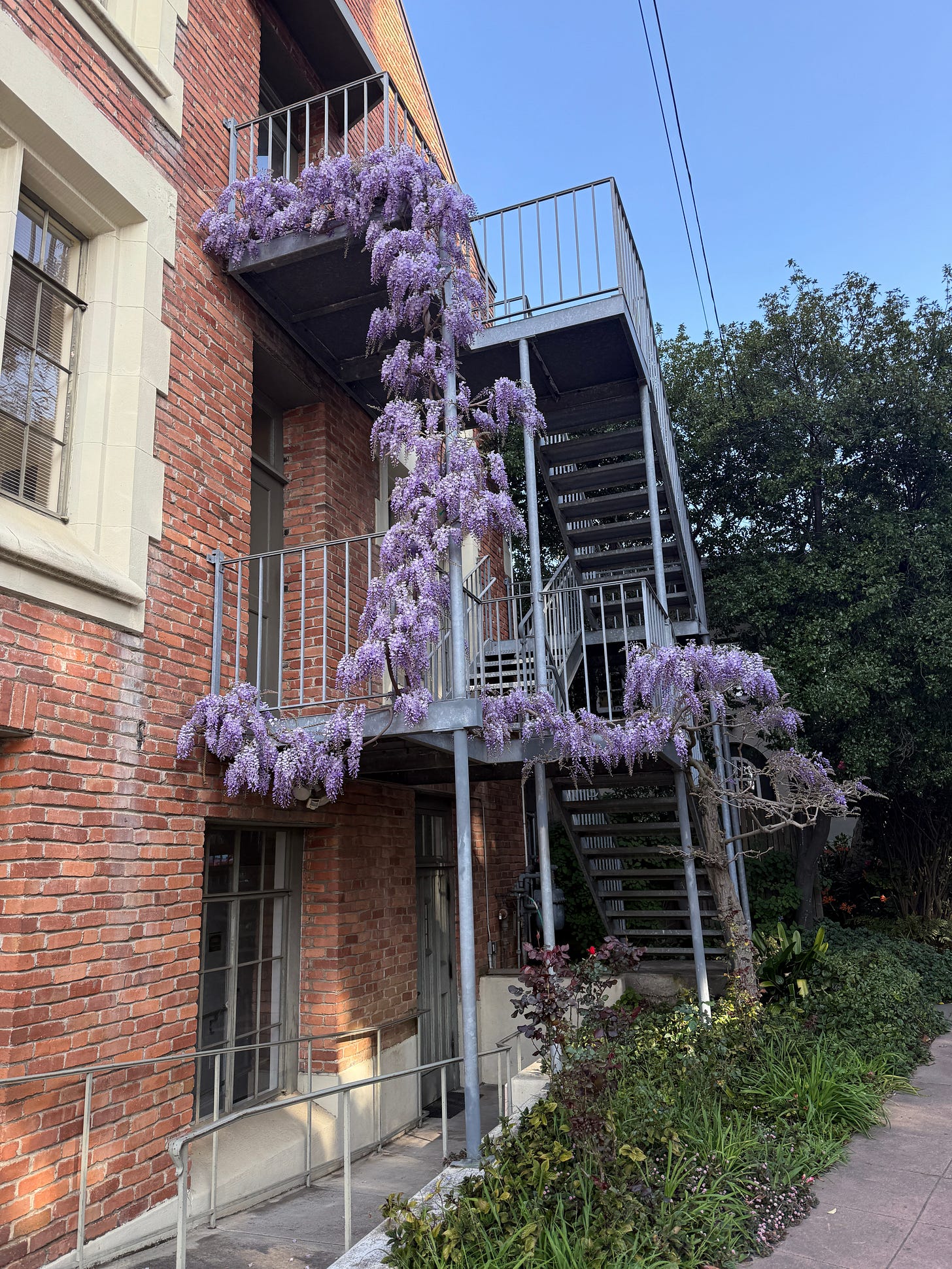Programmer’s log. Epoch time 1743517008. The warm spring weather has been occasionally broken by sudden rainstorms. Strangely, days that alternate between sunny and unexpected downpours make me nostalgic. I grew up in Orlando, FL which is known as both the Sunshine State and the lightning capital of the country. You can only achieve that distinction by having a storm roll in and blow away just as quickly. I have fond memories of huddling with my friends underneath the crowded entrance of a Cinnabon at Universal Studios, waiting for the pouring rain to clear up quickly…
It’s April Cools! We celebrate the spirit of April Fools without the cringe by writing about a topic of genuine interest which is different than our usual content. Last year I wrote about the Ninja Creami. This year I wrote about anime and my nerdy nostalgia for high school slice-of-life.
I first heard of the phrase “Akogare no Paris” while doing research for my next Japan travel guide, and this concept has stuck in my head for months. What a beautiful but tragic idea—to love the idea of something so much that you get physically ill when it doesn’t live up to your expectations.
The Paris of our dreams
Miyazaki, Shinkai, and pushing through dreams to reality
Once in a while when I wake up
I find myself crying.The dream I must have had I can never recall.
But... the sensation that I've lost something
lingers for a long time after I wake up.— Your Name (Kimi no Na wa)
“Akogare no Paris” is a Japanese phrase which means “the Paris of our dreams.” The media and art we consume works to construct an idealized, romantic vision of these places. And the elaborate fantasies exist in our imaginations forever; that is, unless they one day come into contact with reality.
Our imaginary versions can be even more compelling than the real places themselves. Studio Ghibli is famous for creating beautiful, dream-like landscapes. Their extensive filmography features so many stories set in a reimagined Europe, such as Kiki’s Delivery Service and Howl’s Moving Castle. The protagonists go on adventures in quaint 19th-century towns, filled with painstakingly period-accurate architectural details. As Dani Cavallaro writes in The Anime Art of Hayao Miyazaki, the masterful filmmaker has created:
an elaborately fantasized version of Europe as seen “through Eastern eyes.” Indeed, the setting is essentially a fantastic synthesis of diverse European locations, simultaneously redolent of the Italian Alps, of Bavarian castles, of Mont-Saint-Michel and of the Cote d’Azur.

Miyazaki’s version of Europe is a blend of fantasy and reality, intended to evoke both nostalgia and a hopeful vision of the future. Somehow he has managed to merge them seamlessly into a cityscape that is both classical and futuristic. Ancient castles together with steampunk machines.
As Studio Ghibli founder and producer Toshio Suzuki shares about the creation of Howl’s Moving Castle:
… the film concurrently visualizes actual elements of 19th-century culture and society, and images of later epochs as envisioned at the time. Suzuki has discussed at some length this aspect of Miyazaki’s latest movie and noted that when Miyazaki was “wondering what period the movie should be set in,” he came up with the 19th-century for the principal reason that he was fascinated with the many artists who “drew ‘illusion art’ in Europe back then…. They drew many pictures imagining what the 20th-century would be like. They were illusions and were never realized after all.” The spellbinding power of such images, for Miyazaki, resides in their ability to conjure up “a world in which science exists as well as magic, since they are illusion,” and in which conventional boundaries separating the rational from the irrational, the measurable from the incommensurable, and fact from fantasy are, consequently, radically undermined.
But what happens when our conjured up worlds come face-to-face with stark reality?
Sometimes, Japanese tourists who visit Paris can feel a disappointment so strong that they can experience states of anxiety, delusion, and derealization. Their encounter with a reality is so different from their imagined experiences that it produces an intense form of culture shock. This psychological phenomenon is known as Paris syndrome, coined in the 1980s by Japanese psychiatrist Hiroaki Ota.
…
(Click here to read more)
📖 Links and books
Writing and websites I’ve enjoyed recently:
research as a leisure activity (Celine Nguyen)
First global study of the extraordinary role of animals as architects of Earth (Anthropocene)
Proust Questionnaire (Wikipedia)
Isometric Drawings of Sento, Kissaten and other Japanese Establishments (Spoon & Tamago)
I recently finished the series A League of Extraordinary Women by Evie Dunmore and just started How to Winter by Kari Leibowitz.
That’s all for now! See you later alligator 🐊




